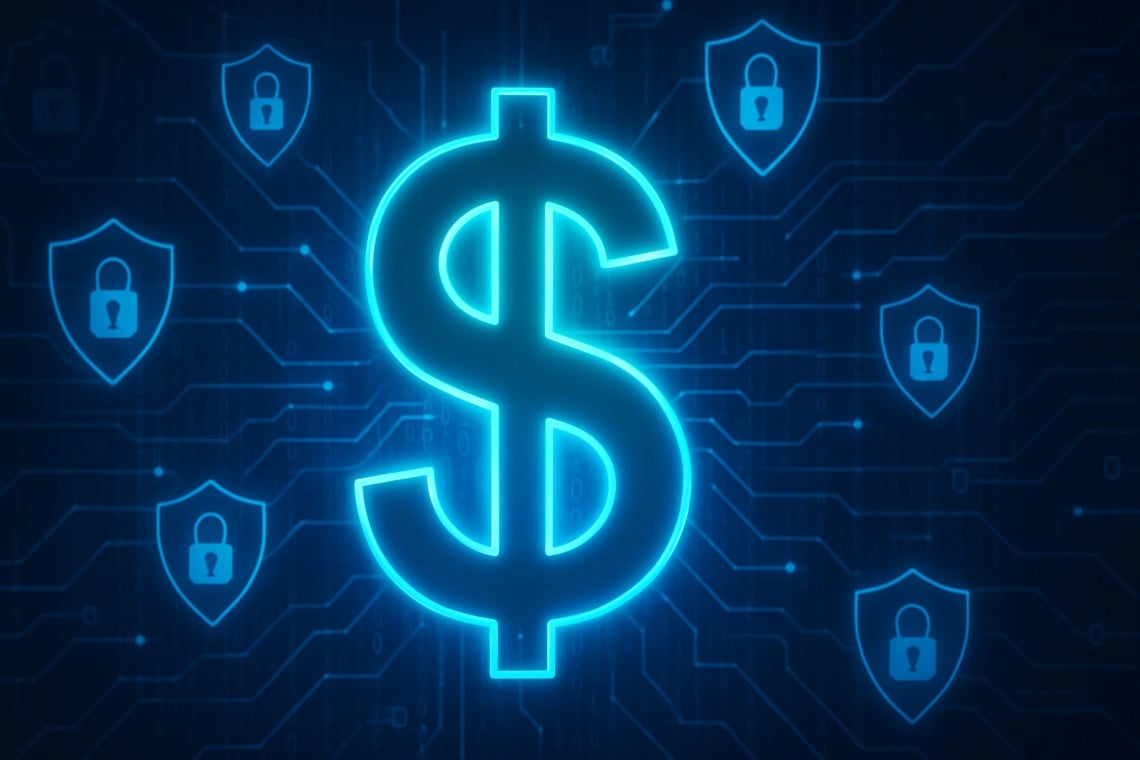The Hidden Tax Traps Lurking in the DeFi Ecosystem
Table of Links
Abstract and 1. Introduction
-
Bitcoin and the Blockchain
2.1 The Origins
2.2 Bitcoin in a nutshell
2.3 Basic Concepts
-
Crypto Exchanges
-
Source of Value of crypto assets and Bootstrapping
-
Initial Coin Offerings
-
Airdrops
-
Ethereum
7.1 Proof-of-Stake based consensus in Ethereum
7.2 Smart Contracts
7.3 Tokens
7.4 Non-Fungible Tokens
-
Decentralized Finance and 8.1 MakerDAO
8.2 Uniswap
8.3 Taxable events in DeFi ecosystem
8.4 Maximal Extractable Value (MEV) on Ethereum
-
Decentralized Autonomous Organizations - DAOs
9.1 Legal Entity Status of DAOs
9.2 Taxation issues of DAOs
-
International Cooperation and Exchange of Information
10.1 FATF Standards on VAs and VASPs
10.2 Crypto-Asset Reporting Framework
10.3 Need for Global Public Digital Infrastructure
10.4 The Challenge of Anonymity Enhancing Crypto Assets
-
Conclusion and References
8.3 Taxable events in DeFi ecosystem
The market cap of DeFi crypto market is ~138 billion USD[122]. The number of DeFi users had increased to ~7.5 million in late 2021 and has declined since[123]. Many DeFi transactions result in accrual or realization of income to the depositors, borrowers, DeFi protocols and other actors and service providers in the DeFi ecosystem. As the income received or accrued along with the associated services might be taxable, it is important to understand the tax implications of various DeFi transactions. Some of the direct and indirect tax events in the DeFi ecosystem and their potential tax treatments are given below. This list is not exhaustive and the treatment of the events below mentioned might be significantly different in different jurisdictions[124].
\ 8.3.1 Direct Taxes in DeFi ecosystem
\ The tax treatment of depositing crypto assets into a DeFi protocol smart contract and their locking up into a Collateralized Debt Position (CDP) would largely depend on the treatment of locking up of crypto assets into a Collateralized Debt Position (CDP) as ‘disposal.’ As the protocol can allow the CDP to be auctioned by keepers to liquidate the CDP, some tax administrations might take a view that this is tantamount to the transfer of beneficial ownership, thus making the creation of a CDP a ‘disposal’ of the underlying crypto asset. Some tax administrations might treat the CDP as a kind of escrow account which does not lead to transfer of beneficial ownership and hence may not be considered a taxable event. To understand the instance of transfer of beneficial ownership of the crypto assets locked in the CDP it would be worthwhile to delve deeper into the mechanism of a Collateral Auction in the MakerDAO protocol. A closer look at the documentation of the liquidation module of MakerDAO125 reveals that a liquidation is triggered when a keeper detects a CDP that is below the liquidation ratio and triggers a liquidation by calling the Dog.bark function[126]. Thus, it can be inferred that the beneficial ownership of the CDP remains with the borrower till the value of assets in the CDP falls below the liquidation ratio and a liquidation is triggered by a keeper.
\ The issuance and disbursal of the loan amount in any other crypto asset in lieu of a CDP might also be taxable for the DeFi platform, but without any tax implications for the DeFi platform user. This might lead to issues of tax neutrality and taxation of such activities being inconsistent with their economic rationale and may also increase the administrative and compliance burden on users. Such transactions are very similar to repo transactions as they do not lead to transfer of all economic rights. Thus, some jurisdictions might consider including such transactions in the repo rules or create new rules for treating such sale and repurchase transactions as loans. This makes their tax treatment in sync with their economic rationale.
\ Some liquidity pools issue tokens to liquidity providers which give them a right to exchange the issued tokens for the original crypto asset pair deposited by the liquidity providers at the time of repayment. This arrangement may be considered as disposal by some tax administrations and subject to capital gains. However, such transactions are also like repo transactions and some jurisdictions might consider including such transactions in the repo rules or create new rules for treating such sale and repurchase transactions in line with their economic rationale. Only the HMRC has issued guidance on such liquidity pools and has also done a public consultation to try to sync the tax treatment of such transactions with their economic rationale.
\ The interest paid by the borrower to the DeFi application, like the stability fee in case of MakerDAO may constitute taxable income in the form of interest for the application (after deducting the interest paid by the application to the borrowers) and might require withholding taxes by the borrower depending upon the legal residency of the DeFi application. The stability fee might be deductible as an expense for the borrower if the DAI is used as an investment or for trading. Actions like auctioning of the accumulated stability fee might also give rise to income for the DeFi application due to changes in the value of DAI with respect to MKR, even though the MKR acquired because of the surplus auction is eventually burnt.
\ The deposits made by borrowers in the MakerDAO smart contract for earning income at the DAI savings rate might also constitute ordinary income and taxable at the fair market value of the return in DAI when it is received. In this case, the DeFi application might be required to withhold taxes based on the tax residency of the borrower. Besides this, any further leveraging of the borrowed DAI or MKR and any income therefrom or any capital gains arising on disposal may also be taxable as income and capital gains respectively and may also have associated withholding requirements. However, some jurisdictions to reduce the administrative and compliance burden might consider taxing the net income or capital gains accruing due to such leveraging.
\ In case the governance of the application decides to recapitalize the protocol through a mechanism like Debt Auction in MakerDAO, the conversion of the issued MKR into DAI might also be taxable for the application. A CDP liquidation by a keeper might also be a taxable event for the borrower as the CDP of the borrower would be ‘disposed’ to repay the DAI loan and the excess ETH will be returned to the borrower after deduction of a penalty. The borrower might be subject to capital gains tax, the loss or gains would be determined by the basis of the liquidated crypto assets. The penalty might be allowed by some jurisdictions as a deductible expense if the borrowed DAI was used as an investment or for trading.
\ Any governance tokens issued to the participants of the DeFi application in the form of airdrops or otherwise would be taxed in most jurisdictions as income at the fair market value of the governance token at the time of receipt. Spending, trading or selling the acquired governance tokens might attract capital gains or taxed as business profit depending upon the nature and scale of the activity. The fee charged by decentralized exchanges (DEXs) for swap transactions might also constitute their income. Also, the returns paid by the DEXs to the liquidity providers might also constitute the income of liquidity providers and allowed as an expense for the DeFi application. Any income or capital gains obtained by further leveraging or selling tokens like UNI, LP or NFTs of a DEXs Liquidity Pool might also attract taxes on income and Capital gains respectively. In most of the liquidity pools like Uniswap, the liquidity providers get a fixed number of LP tokens or an LP NFT which represents their share in the liquidity pool which increases in value over time. The LP tokens or the NFT can be exchanged for the original tokens along with the financial return on the liquidity provided. This realized gain at the time of withdrawal or sale might be subject to capital gains in most jurisdictions.
\ DeFi applications might also hire teams/individuals to develop certain functionalities or provide services to the DAO like assistance in establishing a foundation for the protocol or developing or fixing software of the application. Such income might be characterized as self-employment income in some jurisdictions and may require deduction of social security contributions and other taxes. Depending upon the tax residency of the individuals hired by the DAO taxes might be required to be withheld. Also, the fee charged or incentives given to various other actors or entities like keepers and oracles providing services to the DeFi application, might also be chargeable as income.
\ 8.3.2 Indirect Taxes in DeFi ecosystem
\ Various stakeholders in DeFi ecosystem provide services to the users and other entities for a consideration. For example, Uniswap users need to pay a fee for swapping one crypto asset for another. Keepers also provide the services of monitoring the collateralization ratios of the CDPs and initiate Dutch auctions when they fall below the liquidation ratio. The keeper triggering the liquidation receives an incentive in the form of a percentage of the collateral auctioned. Oracles perform the service of providing external data to the smart contracts of DeFi platforms and charge a fee for the same. The fee charged by various entities in the DeFi ecosystem may also be subject to GST/VAT depending upon the tax residency, registration requirements, thresholds, and place of supply. The LP NFTs minted on UniswapV3 may also be subject to VAT/GST in many jurisdictions.
\
:::info Author:
(1) Arindam Misra.
:::
:::info This paper is available on arxiv under CC BY 4.0 DEED license.
:::
-
Top DeFi Tokens by Market Capitalization | CoinMarketCap
\
-
https://www.statista.com/statistics/1297745/defi-user-number/
\
-
Currently as there are no generally accepted definitions of DeFi which are used or accepted by tax administrations, the terms used below might not have the same meaning as used in regulatory or statutory parlance.
\
-
https://docs.makerdao.com/smart-contract-modules/dog-and-clipper-detailed-documentation
\
-
https://github.com/makerdao/dss/blob/liq-2.0/src/dog.sol
\
You May Also Like

Best Altcoins to Buy as XRP Defies Market at $2.62 – Here’s What Whales Are Accumulating

Private Stablecoin: Cash-like Privacy and Integrated AML Controls
